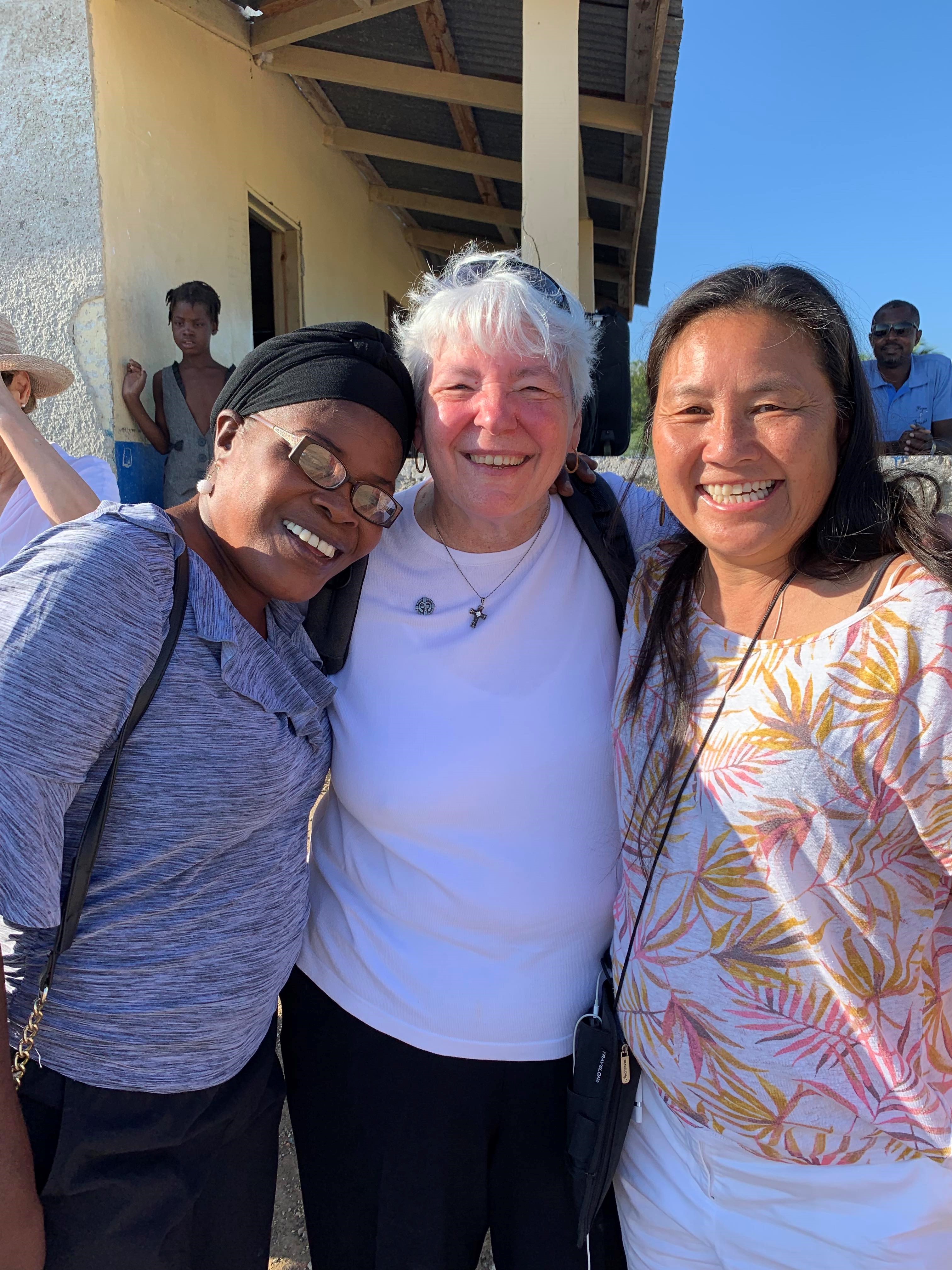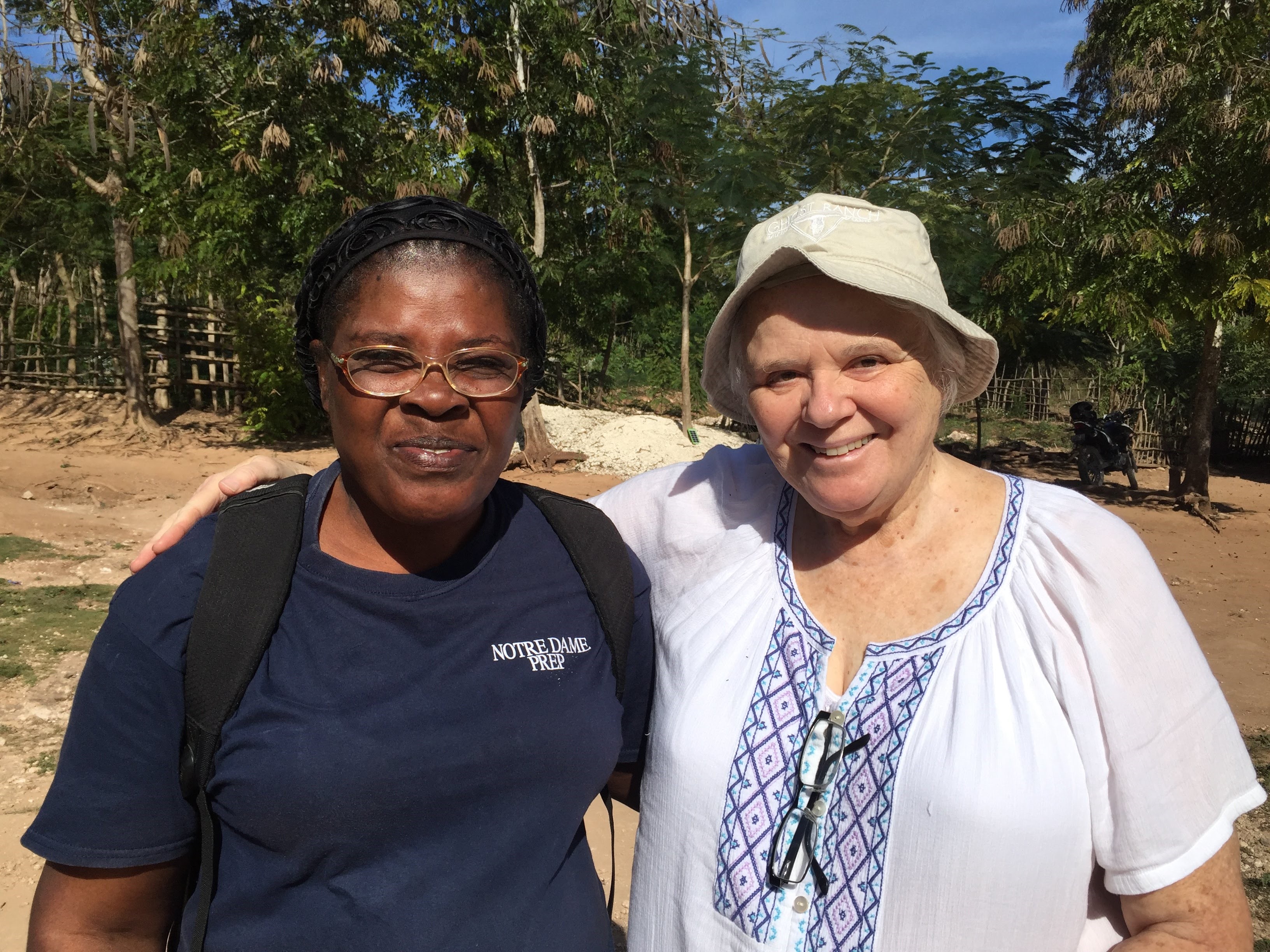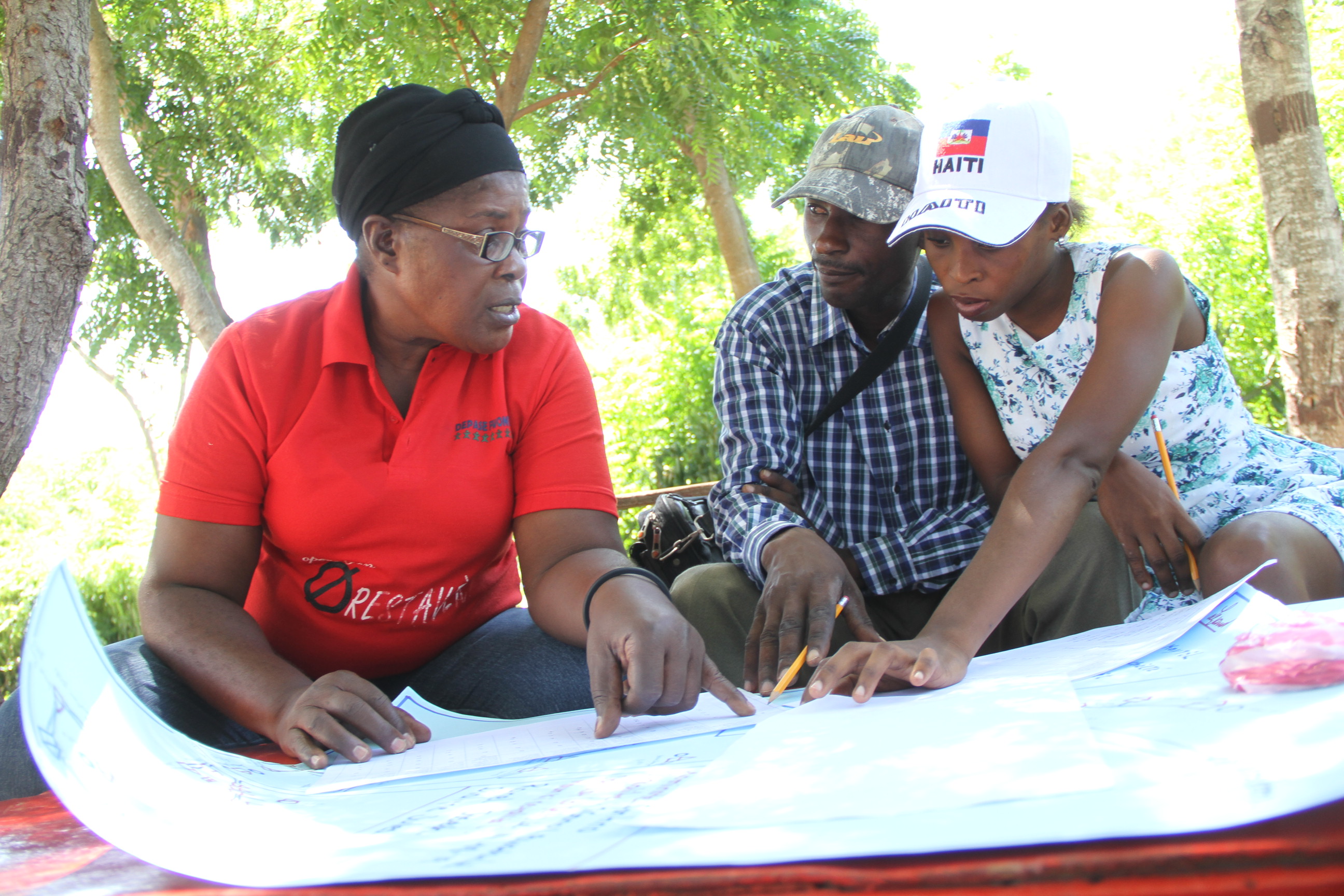Catching Up with Freda Catheus,
Model Community Initiative (MCI) Program Coordinator, Haiti
By Catherine Sarther, SSND and Brian Stevens, Beyond Borders (translator)
 Description of Social Mapping in Haiti
Description of Social Mapping in Haiti
Visitors to Lagonav, Haiti, remember sitting in circles outside or on hard wooden benches inside simple churches. Often they watched Freda Catheus facilitate gatherings aimed at bringing about social change in Haiti.
Currently, Freda leads groups through a process of social mapping, a low-cost tool that engages community members in preparing pictographic representations of their village. Key informants, including elected leaders and community members, create pictographic images of each neighborhood in their community — footpath by footpath and house by house. These maps include essential community assets, such as schools, well, churches, and markets. The image [below/at right/at left of Freda holding a map] illustrates one such map.
After completing their maps, people perceive their community in a new way. They see where people live, what assets they have, and how many adults and children live in each house. We in North America take these concepts for granted, but when villagers map their communities, they appreciate their village in a new, holistic way. As one observed, “Life is sweeter when we put our heads together.”
Although the map itself is a significant accomplishment, it is not the final product. Freda guides each group to deeper understandings about their community through an exercise that ranks the wealth and child welfare of each household. Members agree on a description of each house based on specific observable criteria; construction material (concrete or earth floors), household members, and assets (animals, gardens) are some examples. Based on this information, they first prepare a roster of all houses in the village.
Following this, and using the criteria they established, they place each household into one of four categories on a wealth and child ranking scale. Families classified as wealthiest (1) may have concrete floors, more than three animals (assets), and all their children in school. Families classified as most impoverished (4) may have inadequate housing, no productive assets, and no children in school or children who were sent away.
 Why This Work Is Important
Why This Work Is Important
Freda speaks of this work as “consciousness-raising” and says, “It is the work I love most.” She notes that "Often the poorest members of the community are the most isolated. The maps make them visible to others. Thus raising the consciousness of their presence in the community and leading to further responses from the community.”
Significant features of the processes Freda uses are that they are participatory and empowering—offering local people skills to recognize problems in their community and propose solutions. In a word, local people are the actors in bringing about social change in their own communities.
Freda offered an example of how these processes of consciousness-raising brought about social change in the village of Masikren. As a result of information gathered during the social mapping and wealth processes, key informants found that 18 children were not living at home, but had been sent to live with other families. Parents of these children hoped that in exchange for the child helping around the house, they would be taken care of and sent to school. Local community members, who were aware of the real danger these children faced, invited parents to meetings so that they could learn about the restavek situation. As a result, 16 children returned home, and the remaining two were placed in safe foster homes.
 In this example, the social mapping processes promoted goals of providing education for all children and ending the practice of restavek. These processes not only encouraged these specific changes in Masikren, but also made it less likely that others would see sending children away as a solution to poverty.
In this example, the social mapping processes promoted goals of providing education for all children and ending the practice of restavek. These processes not only encouraged these specific changes in Masikren, but also made it less likely that others would see sending children away as a solution to poverty.
Other Ways Beyond Borders Uses Social Mapping and Wealth Ranking Processes
- To collect baseline data to track social change in communities
- To form networks of local communities to work together to address common problems
- To select participants for their 18-month graduation program, a plan that assists families living in extreme poverty build sustainable livelihoods
Conclusion—Mutual Giving and Receiving
Freda sincerely appreciates the support of the “Sisters” and takes every opportunity to expresses her gratitude. The process, however, is mutual. Freda's ministry enriches us. We become more conscious of our brothers and sisters on Lagonav. Our vision of the world expands, and our responsibility for the world and its people grows. “This mutual giving and receiving is itself a witness in our interdependent world” (You Are Sent, C 25).
[Note: During this COVID pandemic, Freda continues meetings on Lagonav with groups of less than 10 people, wearing masks and practicing social distancing.]

